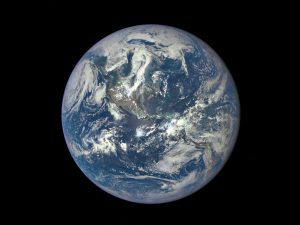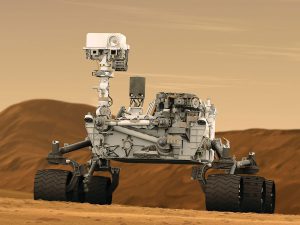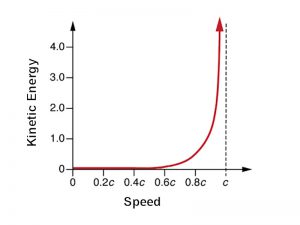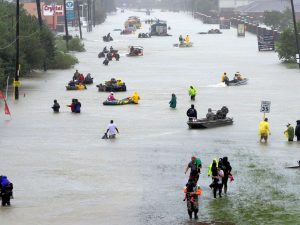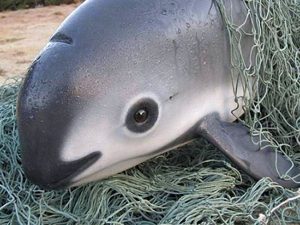Has mankind really driven the planet to the edge of a catastrophic crash of life? Is greed blinding us to what is right in front of our faces? Some would say maybe these claims are a little too reactionary. Okay, so a bit of Florida gets wet, and maybe some people will have to move inland. Can’t science just come up with new technologies to solve the dilemmas we face? Does industry just need to develop a practical and economical electric car? What would happen if we just did “business as usual”? The claims of doom are a bit extreme and, if we accept them at face value, they are really inconvenient to living our lives. What is science telling us about what is happening right now, what we face in the very near future, and what can be done to avoid it?
Earth really is exceptional. From our naturalist point of view, this planet’s life is unimaginably beautiful and breath-takingly diverse. But it doesn’t take a genius to see that Earth’s abundance and diversity is disappearing. There is a point at which this decline becomes mass extinction, and that point is much closer than you may think. Our own survival is indeed inextricably tied to the health of our world. If we expect science to save us, then we need to listen to what science is telling us.
Click on this text to expand or contract an addendum section. This section briefly discusses our origins, space, and potential of moving to another Earth-like planet. So often when discussing the age of Earth, mankind, and the universe, the numbers are not really appreciated. Their magnitude is hard to comprehend. So casually we throw around the “billion” number. We forget how big this number is since we hear it so often nowadays. Because this number is used here, as a starting point, let’s clarify it. If we counted to a billion at one number per second – 1,2,3,4… up to a billion, it would take us more than 31 years, 8 months, and 12 days to get there. Now, in September of 2017, you would have had to have begun counting at the beginning of 1986 to reach a billion by now. Even one billion is a really big number. So, here is what science tells us about the age of mankind, Earth, and the universe around us. 65,000 to 47,000 years ago, when human migrations out of Africa peaked, interbreeding with Homo sapiens may have been a factor that drove the Neanderthals to extinction. Earth Archives (http://www.eartharchives.org/) Modern man or Homo sapiens (Latin: “wise man”) is somewhere between 100,000 and 200,000 years old. For our purposes here, let’s just assume mankind is 200,000 years old. The age of the universe is about 13.8 billion years old and Earth roughly 4.5 billion years old. So, putting this in perspective: let’s visualize the age of the universe on a 24-hour clock. If we stuff those 13.8 billion years onto this 24-hour clock, the age of Homo sapiens is 1.25 seconds. Or if we put Earth’s 4.5-billion-year age onto a 24-hour clock, mankind is now a whopping 3.8 seconds old. Relative to the age of our planet and the universe, our species has been around for a mere eye-blink of time. The first cave drawings date back about 40 thousand years ago. This was only in the last one-fifth of our history. Humans are extremely new relative to the world around us. Multiple mass extinctions and blossoming of life forms preceded our own appearance on Earth. Scientists are recording the effects we are having on our world. Our population growth and history give insight to the future. For now, it is only important to note how recently our species appeared. In terms of geologic time or even the age of mankind, current events are happening at lightning speed. To start, we need to dispel the notions of those who have watched too much Star Trek, and take a brief look at physics. Before examining current research on climate change, pollution, species extinction, etc., let’s dismiss the question of leaving Earth. The notion is unthinkable: that if we destroy Earth maybe we could just leave. This thought is rife with ethical absurdities. And beyond that, physics just does not support the idea in any way beyond very imaginative science fiction movies. No, we are not going to indulge bending space time, wormholes, warp speed, or any other concepts that do not exist in the real world of current science (sorry Michio Kaku). The numbers involved in traveling, even to the close-by neighborhood stars around us, are exceptional. Considering how far away they are, even getting a probe to one of these nearby stars is very, very far in the distant future. Let’s take a simple yet realistic look at those numbers to clarify this point. Traditionally, distances are so great in space that they are measured by the time it takes light to travel there. So let’s put space travel and light speed in perspective. Light travels at 186,000 miles a second or about 670 million miles an hour. Leaving the Earth, light passes the moon in 1.28 seconds. It passes the sun in 8.3 minutes, and passes the outermost planet in the solar system, Neptune, in about four hours. The closest neighboring star system is Alpha Centauri. It has three stars. Smallest and closest of the three stars is Proxima Centauri. A beam of light that left Earth and passed Neptune in 4 hours won’t reach our closest neighbor star for 4.24 years. The red dwarf star Proxima Centauri is much smaller than our sun. It even has a planet that is the right distance from it to have liquid water. However, the star is also a flare star, (it flares up with radiation bursts) making the planet very inhospitable to humans. Currently, there are no other sun-like stars with Earth-like planets known to science. Just for the point of discussion, here are some numbers for sending a “Mars rover” type probe to Proxima Centauri. We note that Mars is about 3 light minutes away, at its closest. It took almost 9 months (253 days) of flight time to get the rover to Mars using our current technology. Let’s consider the logistics of sending a Mars rover-type expedition to Proxima Centauri. The math alone tells us just how unrealistic this notion is. To reach such a distant destination in a reasonable amount of time, the rover would need to travel close to the speed of light. Let’s pick 92% the speed of light (0.92c) for energy considerations, noting that we currently lack the technology to accelerate the probe even close to this speed. Accelerating the rover to 0.92c at one G (Earth?s gravity) would take around 0.89 years, during which time the rover will have traveled 0.41 light years in distance. At this point, the rover could coast at 92% light speed until it needed to decelerate back down to zero velocity to land on the planet near Proxima Centauri. Just to reach our nearest neighbor star, 5.5 years would go by. Since Proxima Centauri is 4.24 light years from us, receiving news of the rover’s arrival, by radio signal at light speed, would take another 4.24 years. We wouldn’t even know that it got there until 9.74 years after its departure. Not to mention the amount of time it would take to gather meaningful information about its planet(s). (calculations) Though the trip doesn’t take an enormous amount of time, what really makes it unrealistic is the amount of energy it would take. All of the energy is expended during the acceleration and deceleration processes. It amounts to 288 billion times as much energy as it would take to get the rover from Earth’s surface to an altitude of 100 kilometers (into outer space). This also does not take into account the weight of any fuel or rocket. The Mars rover weighed only a ton, or about as much as 14 average-sized humans (even fewer if we’re talking about Americans). Even getting a Mars rover to Proxima Centauri is an absurd concept (735 million times the distance to Mars). The notion of transporting humans to a safe haven planet is completely untenable. Thus, we need to focus on preserving Earth while we still can. Huff post reports on Tonawanda Coke Corp found guilty of obstruction of justice in a cover-up of emissions, illegal air pollution, disposal of benzene sludge on the plant’s property, etc. In every area of our planetary sciences that we examine, we see a consistent thread. The oceans, land, and air are all polluted. Massive declines in the number of species, and in the numbers of individuals within species are being recorded. There are huge losses of natural habitats. Each of the last three years has broken the record for highest average annual temperature on record. Human overpopulation is skyrocketing. This is no “leftist” movement, nor is this a political statement. These are observations and objective facts. The decline of our planet can be seen right in front of our eyes if we just open them. Biodiversity is diminishing at an accelerating rate. This is unprecedented in Earth’s history, except during other mass extinction events, such as after catastrophic meteor impacts. Another defining factor is that the decline is happening everywhere all at once. None of us want to hear this, but that’s what the science is telling us. In mid-October of 2017 the Lancet Commission published the most comprehensive analysis to date on global pollution. Dramatically and adversely affected are every aspect our lives, environment, health, and economies. “Pollution is the largest environmental cause of disease and premature death in the world today” warns the 50-page study. The estimated 9 million premature deaths in 2015 were three times more than from AIDS, tuberculosis, and malaria combined and 15 times more than from all wars and other forms of violence. Toxic air, water, soils, and workplaces are responsible for the diseases that kill one in every six people around the world. The effect on our biosphere is unprecedented. Air, soil, and chemical pollution are all on the rise according to the study. “More than 140,000 new chemicals and pesticides have been synthesized since 1950”. Fewer than 50% of these have had any safety or toxicity tests performed on them. This has resulted in episodes of disease, death, and environmental degradation. Lead, asbestos, DDT, PCBs, and ozone-destroying chlorofluorocarbons are historical examples of this. Absent aggressive action, air pollution deaths alone promises to increase by more than 50% by 2050. The study warns that “pollution endangers the stability of the Earth’s support systems and threatens the continuing survival of human societies.” Global warming is having far greater impact to mankind than just ice packs beginning to melt and water levels rising. This change is effecting all life on earth which threatens our own existence. The concept of climate change faces strong opposition led by some of the most “influential billionaires” denying its importance, irregularity, or even its existence. This group is supported by a mass of technocrats who think any problem can be fixed with a swish of technical repair, despite the fact that the science behind that is utterly lacking. Well, for most of us “muggles” it isn’t quite that simple. The buildup of carbon-based pollutants in the atmosphere is causing long-term increases in our global temperatures. Even if we could just halt air pollution entirely, it would only result in a slower rate of temperate increase. Since global temperatures have been tracked, 2016 was the hottest year ever recorded. It followed 2015 and 2014, each of which were record years before it. A 2,500-square mile (the size of Delaware), 640-foot-thick, trillion-ton (that’s 1000 billion!) chunk of ice broke off the Larsen C ice shelf in Antarctica in July of 2017, making it one of the largest icebergs ever recorded. This followed similar collapses that occurred in nearby ice shelves in 1995 and 2002. The upcoming Antarctica summer months may bring even more of these massive ice shelf breakups. Glaciers are shrinking at ever-increasing rates all over the planet. NASA satellites give us the ability to view climate change on a planetary scale like never before in human history. Global temperatures and sea level rise are data readily available to science now. This allows us to analyze and record data not previously available. NASA published that “There is no question that increased levels of greenhouse gases must cause the Earth to warm in response.” Historical and Investigative Research Francisco Gil-White http://www.hirhome.com/climate_change/global_warming01.htm Scientists measure long-term atmospheric compositions by looking at the trapped air in ice cores. The ice cores drawn from Greenland and Antarctica contain unprecedented levels of greenhouse gasses in the most recent layers of the ice. Multiple methods allow scientists to determine the age of the ice along the length (depth taken) of the core. This data shows that carbon dioxide levels after 1950 exceed the highest recorded levels in the last 450,000 years. Our National Research Council writes “…current warming is occurring roughly ten times faster than the average rate of ice-age-recovery warming”. The Intergovernmental Panel on Climate Change (IPCC) states, “Scientific evidence for warming of the climate system is unequivocal.” The IPCC determined that the current warming is “the result of human activity since the mid-20th century and proceeding at a rate that is unprecedented over decades to millennia.” We can’t possibly think that the addition of such incredible amounts of pollutants in our air will not have effect on our lives, health, and earth. On June 28th, 2017, the National Oceanic and Atmospheric Administration (NOAA) and the American Meteorological Society (AMS) released their annual summary of the global climate. Based on scientists’ contributions from around the world, the 673-page report is a compilation of data collected in environmental monitoring stations along with instruments located on land, water, ice, and in space. Among their findings was: “Many lines of evidence demonstrate that human activities, especially emissions of greenhouse gases, are primarily responsible for observed climate changes…”. The report reads: “There are no alternative explanations, and no natural cycles are found in the observational record that can explain the observed changes in climate.” The global average sea level was the highest on record, 3.25 inches above 1993, when satellite records began. It continues with “Carbon dioxide in the atmosphere averaged 402.9 parts per million, which scientists believe to be the highest in about 800,000 years and the biggest jump in the 58 years it has been recorded.” So, we are back to our opening paragraph. How bad is this? How alarmed should we be? What does this really mean to most of our lives? Outcomes of our world warming are really beyond what most people can imagine. The World Health Organization’s (WHO) director general, Margaret Chan, says “Climate change is the defining issue for public health in the 21st century”. No country is immune. “The [health effects of climate change] are right before our eyes, well-known, measurable, scientifically documented, and daunting.” The Natural Resources Defense Council (NRDC) is not quite as positive about the effects of climate change. NRDC publishes “As temperatures spike, so does the incidence of illness, emergency room visits, and death.” Their published research outlines: increased severity of Atlantic hurricanes, compounded allergy and asthma suffrage to 23 million children and adults, increased death and illness related to greater frequency and severity of heatwaves, heat holding down pollutants increasing respiratory Illnesses, and rapid development of dangerous pathogens within insect carriers to mention but a few problems. The most heat-vulnerable older Americans will rise from today’s 40 million over 65 years of age to 86 million in 2050. Hurricane Harvey hitting the coast of Texas during August of 2017, set a record as the largest rainfall event in US history. Right behind this, Hurricane Irma hitting Florida in September ranked among the most powerful Atlantic hurricanes ever recorded. Directly behind this followed Hurricane Maria. The worst natural disaster in Dominica in its recorded history. This was also the strongest hurricane to make landfall in Puerto Rico since 1928. It is of interest and probably not a coincidence that these would match a global warming climate model predicting more extreme weather events and Atlantic hurricanes. A cost in lives and to our society will take years to become fully clear. The shame is that it is not just climate change. There is a wave of man-made dilemmas making themselves clear. A stunning loss of biodiversity is becoming extremely evident. The consequences of us doing nothing are horrific. A study in the Proceedings of the National Academy of Sciences of the United States of America (PNAS) reports that 40% of the Earth’s species have experienced severe population declines (>80% range shrinkage). They attribute their findings largely to pollution, habitat loss, climate change, and over-harvesting. “Earth is experiencing a huge episode of population declines and extirpations, which will have negative cascading consequences on ecosystem functioning and services vital to sustaining civilization.” That’s us. The study asserts that the loss of biological diversity is one of the most severe human-caused global environmental problems. Conservatively, almost 200 species of vertebrates have gone extinct in the last 100 years. In the “normal” extinction rate prevailing over the last 2 million years, those vertebrate species would have taken not a century, but up to 10,000 years to disappear. Major declines in prominent animal species are being recorded in very short periods of time (e.g. African lion (Panthera leo) dropped 43% since 1993 and giraffes dropped from around 115,000 individuals in 1985 to around 97,000). It is a staggering list. The NAS study says, “Hundreds of species and myriad populations are being driven to extinction every year.” The most recent Living Planet Index has estimated that wildlife abundance decreased by as much as 58% between 1970 and 2012. These statistics indicate extreme degradation to the life on Earth based on modern comparative research. Scientists have made dire warnings about the future of our planet saying that Earth’s sixth mass extinction is already underway and that humans are causing a “biological annihilation” of wildlife. PNAS paints a realistic world picture in their study. It shows that as much as 50% of the animal individuals that once shared Earth with us are already gone, as are “billions of area populations”. It further expands its analysis to include similar losses of plants, insect populations, and subsequent intricate ecological networks along with their accompanying microorganisms. “Animals with backbones, like fish, birds, mammals, amphibians, and reptiles – are disappearing 114 times faster than they should be.” Their assumptions that “Humanity will eventually pay a very high price for the decimation of the only assemblage of life that we know of in the universe” should be of primary concern to us all. The report summarizes and warns in conclusion: “Thus, we emphasize that the sixth mass extinction is already here and the window for effective action is very short, probably two or three decades at most. All signs point to ever more powerful assaults on biodiversity in the next two decades, painting a dismal picture of the future of life, including human life.” Although this article primarily addresses the disappearance of the animal life, Earth’s extinction event stretches across the entire biota. This immediately and directly affects mankind such as in the case of the pollinators. In February of 2017, the Center for Biological Diversity cites that “The most comprehensive global report thus far on the status of pollinators found that more than 40 percent of them, mostly bees, are facing extinction.” This extends then to plant life of which 90% are dependent on insect pollinators. Habitat loss, pesticide use, and global temperature changes cause these declines. This, then, directly threatens our food supply. The Center for Biological Diversity’s Kelsey Kopec, author of the 2017 study on North American and Hawaiian Bees, states that “If we don’t act to save these remarkable creatures, our world will be a less colorful and more lonesome place.” The world’s most critically endangered primate is the Hainan gibbon. It’s demise is primarily due to habitat loss and hunting. Tradition beliefs were to boil down a whole animal for a few days. The resulting thick hairy paste is a valuable component in Chinese medicine. Our news quietly reports a number of major animal species that are either hanging on by a thread or that have such low populations that they are on the way out. The three Northern White Rhinos left on Earth will go extinct, and the Hainan Gibbon that used to roam half of China struggles to avoid extinction. There are about a dozen gibbons remaining on one island off China’s coast. They don’t reproduce in captivity and females have only one offspring every two years. The list goes on and we can only mention a fraction of them here. Pressures on rare animal life caused by senseless human destruction are far-ranging. They include uses in pseudo-medicines, illegal fishing practices, trophy hunting, animal captures for the pet industry, and the fur trade to mention just a few. Temptations in poor countries to make a quick profit are hard or impossible to control. Stories like that of the rare, endemic Vaquita in the Gulf of California are heart-wrenching. A Vaquita is a small, 95-lb. porpoise that lives in the north of the Gulf of California. The gulf was once a haven of incredibly abundant marine life. Commercial fishing ravaged the abundance of highly prized and marketable seafood. Greed and corruption in the government and the lack of enforceable regulations decimated the historical incredible abundance in the gulf. Endemic species like the Vaquita were defenseless against man’s greed. Illegal gill nets, set up to catch fish, snare Vaquitas. Being oxygen-breathing mammals, the small porpoises drown in the nets. The supposed medicinal value of their air bladder makes this part of the Vaquita a prized Chinese delicacy that can fetch up to $20,000 apiece. This further exacerbates the problem. The Vaquita has been relentlessly hunted. This beautiful porpoise may have actually gone extinct this year. Some estimates of a potential 30 animals left in existence give hope for a captive breeding program. Their value caused local fishermen to compete with conservationists to find any remaining individuals though. The uncertainty of a captive breeding program, starting with finding enough individuals to maintain genetic diversity, spells another White Rhino story. The unimaginably cute American Pika has faced unprecedented extirpation in the Sierra Nevada Mountains of California in 2017 attributed to climate change. In September of 2014 we posted an article on the plight of the American Pika – unmercifully cute alpine furballs here in our blog. Much to our dismay, August 31, 2017, PLOS released research studies detailing the largest area of American Pika extinction yet reported for the modern era. The five-year study from 2011-2016 focused on the American Pika populations of the Sierra Nevada Mountains west of Lake Tahoe. Combined with an additional 24 sites to the north, complete extirpation of the American Pika had occurred in their 14 survey sites west of Lake Tahoe. The study focused on “an unprecedentedly large (165 km2) region within a broad contiguous area of its distribution in the Sierra Nevada.” The study, utilizing known weather data from 1910-2016, concluded “the time-frame of shrinking of pika distribution as a result of warming temperatures is likely to be on the scale of decades, not centuries.” The Oceans are much trickier to access than the land and air. Although fundamental changes are visible, it is still much harder to measure the decline of marine life. Obvious changes in acidification, increasing temperatures, reduced food availability, and the plummet of life in shallow water like the world’s reef systems, are evident. Extinction events in the deep waters, declines in plankton (phytoplankton produces half of our world’s oxygen in the oceans), or seafloor health are much more difficult to evaluate. Yet we do know that bottom trawlers scraping large nets across the seafloor have already affected 20 million square miles of ocean, turning parts of the continental shelf to rubble. Coral reefs have declined by 40 percent worldwide. Ocean pollution has become so extreme that it could jeopardize our life on land. Scientists expect plastic waste in the ocean to exceed that of the fish by 2050. If we don’t set up a whole recycling industry and economy for it, the amount of plastics leaking into the ocean will worsen. The World Economic Forum (WEF) reports that “only 14% of plastic packaging is collected for recycling. When additional value losses in sorting and reprocessing are factored in, only 5% of material value is retained for a subsequent use.” The WEF report continues, “Each year, at least 8 million tons of plastics leak into the ocean”. Plastics intended useful life is typically less than one year; however, the material persists for centuries. New plastics will consume 20% of all oil production within 35 years, up from an estimated 5% today. The production of plastics further increases our carbon footprint. Our marine biosphere may not yet have seen the extinction rates that the land-based biosphere has. Clearly, the oceans are in trouble. Mankind has severely affected the oceans as well as the land. We just do not have the data to significantly determine extinction rates except with a few large animals. “Queensland fisherman caught selling bills of endangered sawfish” reports The Guardian. The once common sawfish’s last stronghold may be Australia. Highly prized are their fins for use in shark fin soup. Fishermen sell the bills as decoration. Catching or possessing sawfish is illegal. In the once common larger fish, like the sawfish, declines are readily visible. Subsequently, the IUCN now lists all six sawfish species as endangered or critically endangered. Beyond the basics, how many species and groups of species have gone extinct is difficult to assess. Even accurate population estimates are problematic. The Intergovernmental Panel on Climate Change reports that ocean warming dominates the increase in energy stored in the climate system. It accounts for more than 90% of the energy accumulated between 1971 and 2010. Only about 1% is stored in the atmosphere. Larger fish can move to cooler waters as temperatures rise. This is not possible for the smaller base of the ecosystem. Increases in ocean acidity are particularly damaging to creatures with calcium carbonate shells or skeletons, including mollusks, crustaceans, and corals. Whaling, in the early 1800s, drove the Sperm Whale and several species of turtles to the brink of extinction. To the people of the time, the oceans were limitless. They exploited the turtles for food and the whales for oil while each was plentiful. Their only limitation was simply the depletion of availability. Species extermination was inconsequential and they did not understand the value of diversity. This was mankind’s prevalent attitude well into the late nineteenth century when we slaughtered 50-75 million buffaloes to near extinction. Even today, it is hard to justify the mentality of this. In this modern era, we do know that we can destroy species. We have the information to know when we are doing it and understand at least some of the potential consequences. History will not forgive us for knowingly destroying our planet’s precious life. There has been an exponential growth in our human population in the last hundred years. Advances in medicine, increases in life expectancy, and high birth rates have been large factors in the historical growth. In the last hundred years, our population has gone from less than 2 billion to over 7.5 billion. This is almost a 4-fold increase. The U.N.expects the population to reach 9.6 billion by 2050. Although the population growth is leveling in developed countries it will remain high in many underdeveloped regions. China currently has the highest population in the world. The U.N. expects China’s population to decline by almost 40% by the end of the century. However, they expect the population of India to grow throughout the century, almost doubling China’s by 2100. Nigeria will have the greatest growth by the turn of the century increasing by 600 million people. No country will be immune to the effects of the total world human population growth. National Geographic publishes research suggesting world population could reach as much as 12.3 billion by 2100. Photo shows church service on the outskirts of Lagos, Nigeria Population in underdeveloped countries account for Ninety-seven percent of the projected population growth. The only developed nation expected to add significantly to its population is the US (Population Reference Bureau’s 2011 World Population Data Sheet). While Japan, Germany, and Russia will reduce their populations. The declines in biodiversity, increases in temperatures, and pollution rates all share a common thread associated with human population growth. There is fierce opposition to the suggestion of limiting population growth. A conscious effort by the people to minimize population would certainly be reasonable. According to the PNAS analysis, the major declines in Earth’s biodiversity stems from population growth. “Much less frequently mentioned are, however, the ultimate drivers of those immediate causes of biotic destruction, namely, human overpopulation and continued population growth, and overconsumption.” It is an amazingly beautiful world we live in. The first step to caring for it and its diverse life is to go see it. If enough of us care, we may be able to mitigate the damage that is in process. Like all dilemmas we face, we the people need to be aware of the potential dangers ahead. Get involved in groups and organizations that are conscious of, promote, and improve our environment. Some of these are in the text above. Get outdoors, join an Audubon group, etc. See your world, get interested. With computers, cell phones, and the internet at our fingertips, we have largely forgotten the outdoors. It is not something we can forget. Our lives, future, and health are tied to Earth and there is no possibility anytime soon of getting anywhere else. The devastation to our planet’s biodiversity is in full swing. Encourage your legislators to improve our home. This is such a fantastic world, we all need to care for and appreciate it. The life on Earth, all life, is irreplaceable. Once we destroy life, it is gone and it won’t come back. We are not only gambling with leaving a desert behind us, we are gambling with destroying mankind. The changes are now happening fast and are visible if we look. This is not a problem somewhere out in the future. It is here right now. We can mitigate damage to our home if we act now. An improved future for us and our children needs to be set in motion. We are, indeed, amid a devastating crash of life on our planet. Will greed blind us to what is right in front of our faces? Special thanks to the staff members at Optics4Birding for their input, contributions, and review. These contributors include: Peter Young, Bruce Aird, and Steve Sosensky.
Billion
Age, Time, Earth, and Mankind – Who are we?

Dreamers
Could we move?
How far are the local stars and planets from Earth?
A trip to Proxima Centauri
4.24 Light years
The Troubles at Home are Happening Fast

Pollution
Climate change
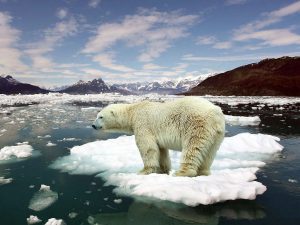
Research from NASA
Ancient Atmospheric Composition
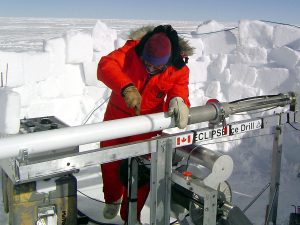
Atmospheric Warming
Climate Science Special Report

Climate Denials
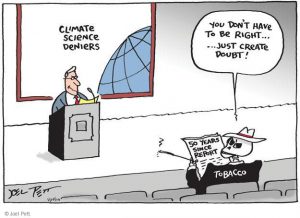 Greed and ignorance are the opponents denying climate change. Let’s be clear that there is a significant amount of money going into attempting to disprove climate change. The burning of fossil fuels supports our society and industry. Unfortunately, the evidence and research on climate change is rock solid and it is clear that mankind is the culprit.
Greed and ignorance are the opponents denying climate change. Let’s be clear that there is a significant amount of money going into attempting to disprove climate change. The burning of fossil fuels supports our society and industry. Unfortunately, the evidence and research on climate change is rock solid and it is clear that mankind is the culprit.Health Effects
Weather Extremes
Earth’s 6th Mass Extinction

Declines
The PNAS Study

Loss of Pollinators
The News

Vaquita
American Pika

Oceans Pollution and Threats to Marine Life
Plastics
World Economic Forum
Marine Extinctions
Ocean Declines

Learning from the past
Human Population

Population Increase

What can we do?

Conclusion
Author’s Note:

